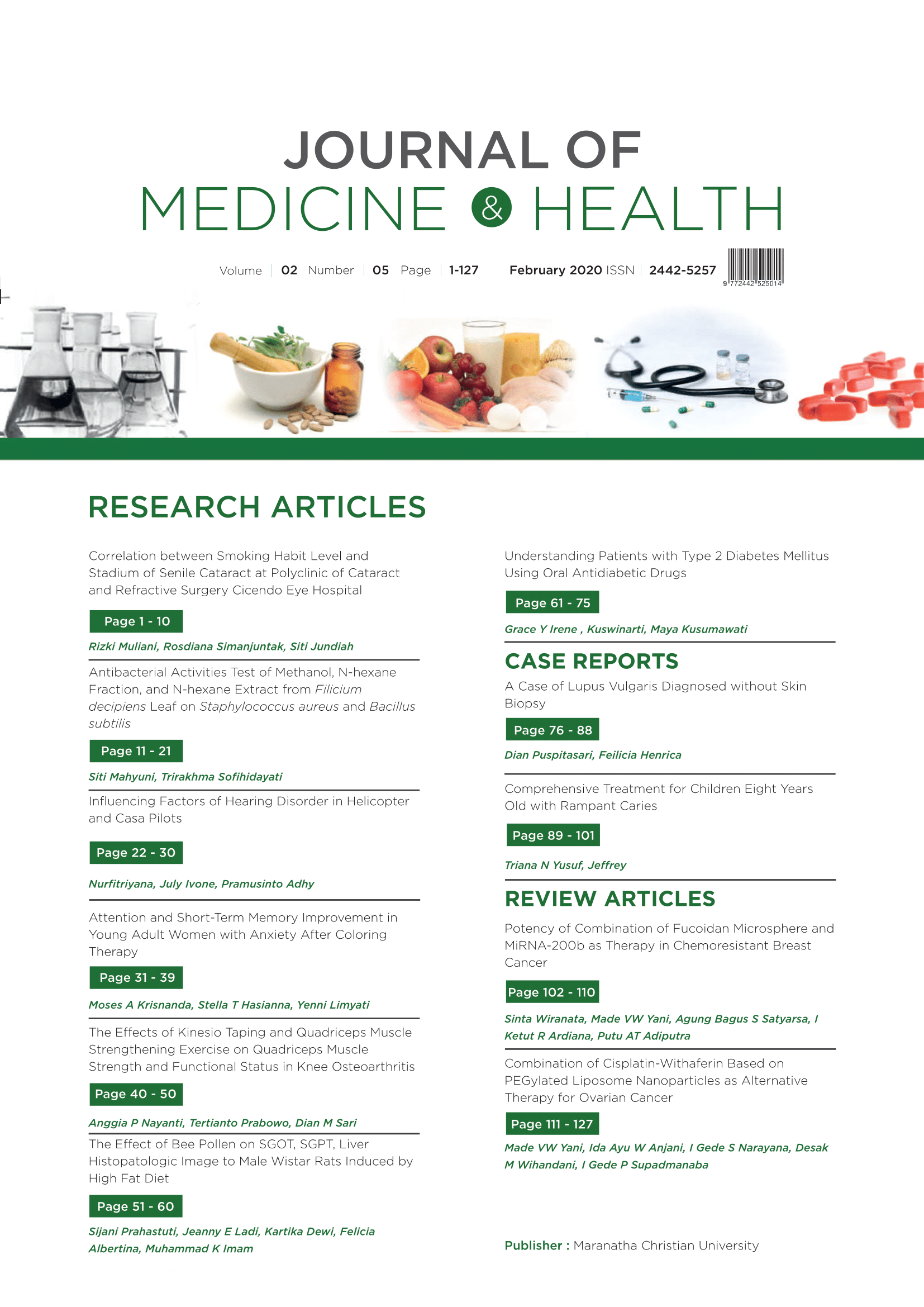The Effect of Bee Pollen on SGOT, SGPT Levels and Liver Histopathological Images of Male Rats Wistar Induced by High Fat Diet
DOI:
https://doi.org/10.28932/jmh.v2i5.2040Abstract
Dyslipidemia is a risk factor for Non Alcoholic Fatty Liver Disease causing hepatocyte damage. Bee pollen has hypolipodemic, anti-inflammatory effects. The purpose of the study was to analyze the effects of Bee Pollen on the levels of SGOT, SGPT, and its effects on the liver’s histopathologic. The experimental laboratory research method, 30 rats divided into 6 groups (n = 5). HFD was given for 28 days, Simvastatin and Bee Pollen were given from 15 until 28 days. SGOT, SGPT were examined at 0, 15, 29 days by spectrophotometry (340 nm). Histopathological liver examination at 29 days. Results: The levels of SGOT, SGPT between Bee pollen 1 (18 mg/kgBW/day), 2 (36 mg /kgBW/day), 3 (72 mg /kgBW/day) with HFD were very significant differences. The levels of SGOT Bee Pollen 1,2,3 compared to simvastatin were not significantly different. SGPT Bee Pollen 3 levels compared to simvastatin there were no significant differences. Measurement of the degree of cloudy swollen cells, portal inflammation, bridging fibrosis, periportal fibrosis between Bee Pollen 1, 2 with HFD there is a significant difference, Bee Pollen 3 and HFD differ very significantly. Conclusion: Bee Pollen can reduce levels of SGOT, SGPT, its potential effects is equivalent to simvastatin on reducing levels of SGOT, SGPT and improved the histopathological image of the liver on male rats wistar induced by high-fat diet. . Keywords : Dyslipidemia, SGOT, SGPT, Bee pollen, Histopatological ImageDownloads
Download data is not yet available.
Downloads
Published
2020-02-27
How to Cite
1.
Prahastuti S, Ladi JE, Dewi K, Albertina F, Imam MK. The Effect of Bee Pollen on SGOT, SGPT Levels and Liver Histopathological Images of Male Rats Wistar Induced by High Fat Diet. J. Med. Health [Internet]. 2020Feb.27 [cited 2025Dec.25];2(5). Available from: http://114.7.153.31/index.php/jmh/article/view/2040
Issue
Section
Articles
License
Authors who publish with this journal agree to the following terms:
- Authors retain the copyright and grant the journal right of first publication with the work
simultaneously licensed under a Creative Commons Attribution-NonCommercial 4.0 International License that allows others to share the work with an acknowledgement of the work's authorship and initial publication in this journal. - Authors are able to enter into separate, additional contractual arrangements for the nonexclusive distribution of the journal's published version of the work (e.g., post it to an institutional repository or publish it in a book), with an acknowledgement of its initial publication in this journal.
 This work is licensed under a Creative Commons Attribution-NonCommercial 4.0 International License.
This work is licensed under a Creative Commons Attribution-NonCommercial 4.0 International License.

















